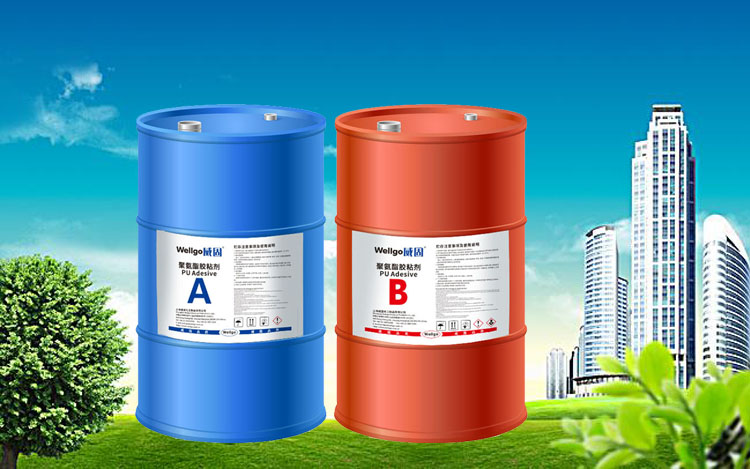PolyurethaneRaw materials commonly used in industry and used in large quantitiesMainThere are toluene diisocyanate (TDI), diphenylmethane diisocyanate (MDI), PAPI (the raw material industry often refers to MDI and PAPI (collectively referred to as MDI) and polyether polyols. MDI and TDI are key raw materials for PU products.

1. GlobalTDI’s production situation :
TDI is one of the basic raw materials for manufacturing polyurethane.
ProductionTDI mainly includes two methods: phosgene method and non-phosgene method. At present, only a few companies in the world have TDI manufacturing technology with independent intellectual property rights, such as BASF, Bayer, Mitsui Takeda, and Dow Chemical. From the perspective of TDI manufacturing process technology, it is mainly divided into two process routes: one is the traditional process based on Swedish and American DuPont technology; the other is the improved process represented by German BASF technology.
In terms of comparison between the two processes, the BASF process uses turbine stirrer high-speed stirring and negative pressure hydrogen absorption technology, uses ethanol as the solvent, and uses nickel catalyst for catalytic hydrogenation , synthesizeTDA. The advantages are uniform reaction, simple catalyst separation process, and low catalyst loss. The disadvantages are that the mechanical seal of the reactor stirring device is easily damaged and the material quality requirements are high; in phosgenation In the synthesis stage of TDI, the high boiling point solvent diethyl isophthalate (DEIP) and the spray tower two-step reaction process are used. The advantages are uniform mixing, complete reaction, few by-products, and high product purity. The disadvantage is that the DEIP solvent is used during the reaction process. A side reaction will occur with phosgene, which consumes a lot of money, and the produced by-products return to the reaction system with the solvent, which can easily cause blockage of the reaction system. The DuPont process uses a high-power, high-flow circulating pump to reversely spray hydrogen and use a palladium carbon catalyst for catalytic hydrogenation to synthesize TDA. The advantage is that the reaction does not use solvents, but the disadvantages are high energy consumption, cumbersome catalyst separation process, and large catalyst loss; phosgene The one-step production process of o-dichlorobenzene is used in the chemicalization stage. The advantages are that the process flow is relatively simple, the solvent consumption is low, and no side reactions occur. The disadvantages are that the one-step reaction yield is low, the raw material consumption is large, and it is easy to cause high TDI costs. .
In 2008, more than 40 sets of devices from more than 30 companies around the world were producing TDI, with a total production capacity of about 2 million tons per year. The main foreign manufacturers include: Dow Chemical, Bayer, BASF, Japan’s Mitsui Chemicals Co., Ltd., Japan Polyurethane Industries, South Korea’s KFC and OCI, etc.
In 2010, global TDI supply slightly exceeded demand. Due to the slight slowdown in downstream demand for TDI in Europe and the United States, coupled with environmental protection restrictions, TDI production capacity in Europe and the United States has been continuously reduced in recent years, and production and sales have gradually been transferred to Asia. In recent years, the new TDI production capacity has been concentrated in Asia, and the supply and market share in Asia have also increased year by year. In 2010, the actual effective global TDI production capacity totaled about 2.2 million tons, and the 150,000 tons of new production capacity were all newly built in my country. Global (especially domestic) TDI has expanded rapidly in 2011 and beyond. New domestic TDI production capacity includes Bayer (Shanghai) adding 250,000 tons, and Cangzhou Dahua’s 100,000 tons/year TDI phase I unit is expected to be completed and put into operation in the first half of 2012. Yantai Juli’s 50,000 tons/year TDI plant is expected to be completed and put into operation by the end of 2011. In addition, many companies such as Blue Star Group, Fuzhou Erhua, and Yanchang Petrochemical also plan to build or expand TDI projects. It is expected that by 2015, domestic TDI production capacity will reach 2 million tons/year.
2. GlobalMDI production situation:
Usually MDI is a general term for pure MDI, polymerized MDI (a mixture containing a certain proportion of pure MDI and polyphenyl polyisocyanate), etc. Under normal circumstances, in the product obtained after distillation of the MDI mother liquor, the ratio of pure MDI and polymerized MDI ranges from 3/7 to 4/6. The production of MDI is divided into two parts: crude MDI production and MDI refining. The production of crude MDI uses phosgene, aniline, etc. as raw materials and adopts the phosgenation production process. Due to the high toxicity of phosgene, the production of crude MDI is complicated and requires strict safety measures. The MDI refining device uses crude MDI as raw material, and through continuous distillation and post-processing, it obtains different brands of pure MDI and polymerized MDI products. The process is relatively simple.
Currently, there are only four major multinational companies in the world: BASF, Bayer, Huntsman, Dow Chemical and China Yantai Wanhua Polyurethane Co., Ltd.MDI manufacturing technology. MDI production has a history of more than 40 years, and production and consumption still maintain a high growth rate.
MDI production capacity and demand in various regions are shown in Table 1-4 and Table 1-5 above.
Aliphatic (containing alicyclic) diisocyanate is abbreviated as ADI. At present, more than 90% of ADI industrial production in the world is still Using the phosgene method, the main varieties include HDI, IPDI, dicyclohexylmethane, 4,4′-dicyclohexylmethane diisocyanate (H12MDI), tetramethyldimethylene diisocyanate (TMXDI), xylylene diisocyanate Diisocyanate (XDI), etc. The current global ADI production capacity is about 250,000 tons/year, of which the production of HDI, IPDI and H12MDI accounts for 85% of global ADI production. Currently, the companies producing ADI in the world are mainly in Western Europe, North America and Japan, including Evonik Degussa, BASF and Bayer in Germany, Pasto in Sweden (Rhodia in France), Asahi Kasei in Japan and other companies.


